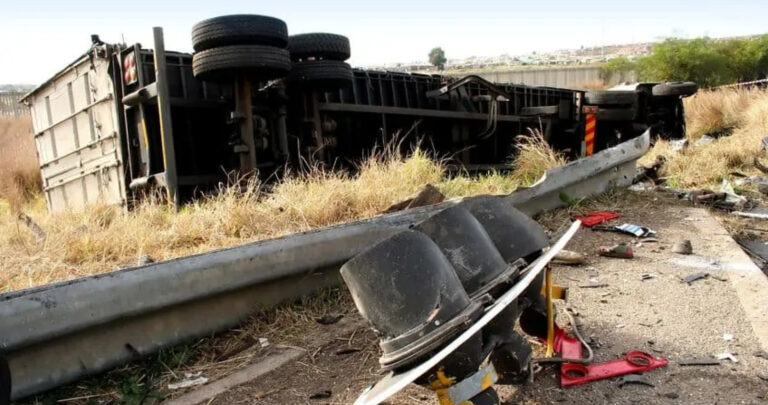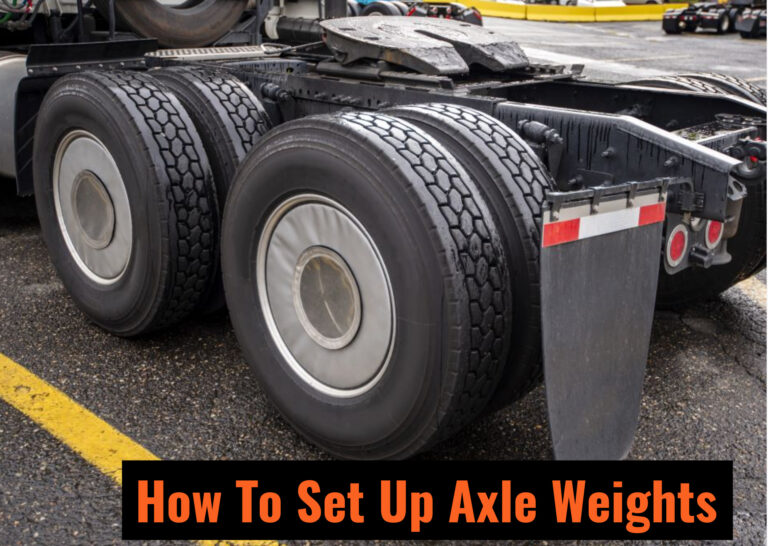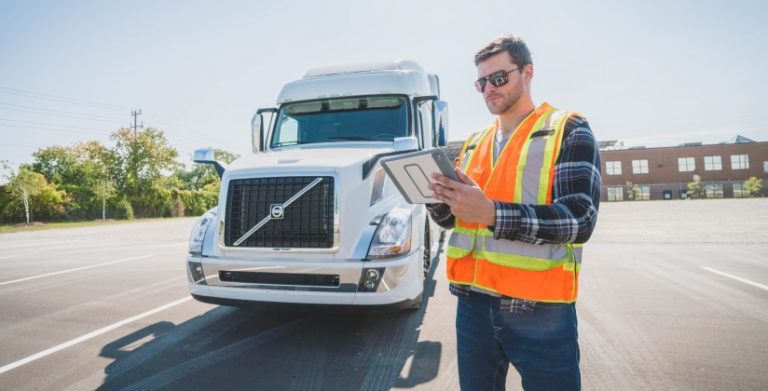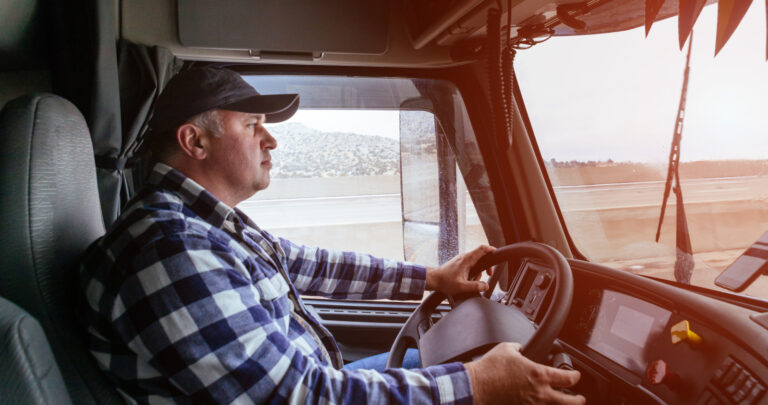7 Critical Mountain Driving Tips For Truck Drivers
Mountain driving for truck drivers can be intimidating, especially for first time or rookie drivers.
If you follow some basic safety rules and take advantage of the safety features available to you then you can quickly gain confidence on mountain routes.
It always helps if you are familiar with the area in which you are traveling.
However, a driver can be surprised by an unexpected patch of ice, lurking around the corner.
Follow these mountain driving tips especially new truck drivers, when travelling on risky terrain.
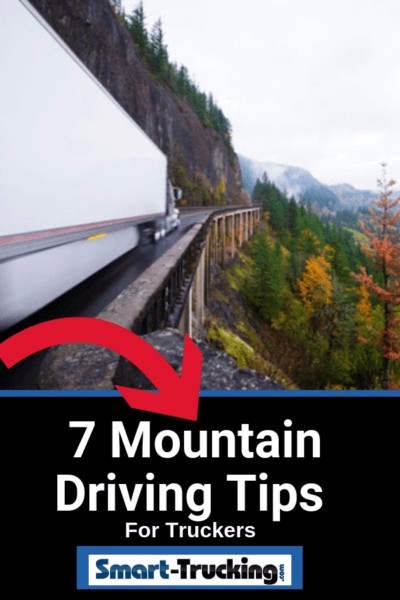
Our Best Mountain Driving Tips For Truck Drivers
#1 Pay Close Attention to Your Grade
A major cause for accidents even on level routes is over-confidence.
Just because you are in an area you are familiar with, doesn’t mean you should let your guard down. This is especially true when you are dealing with a steep grade.
If you are not familiar with the grade, don’t guess at the % of the grade when you are at the top ready to descend.
Always look for the grade signs posted. They should be marked and will give you an idea of what speed you should maintain during your climb or descent.
Be aware that it takes some time to climb or descend a grade. It’s not something to rush. Take as much time as is needed to travel slowly or methodically.
Don’t make the mistake of letting the truck go as you near the bottom of the hill.
Drivers can sometimes make the mistake of thinking they are in the clear as they near the bottom and pick up speed.
This can be a deadly mistake.
There can be a patch of ice on the road or an unexpected curve.
Be sure to walk the truck ALL the way down the hill.
Related > The Dangers of Being an Overconfident Truck Driver
#2 Keep Your Truck Going Slow and Steady
The best safety driving tip for mountain routes that I can give you is ‘slow and steady wins the race’.
No truck driver ever died from traveling down a mountain too slowly.
Always creep down the hill. Never travel too quickly.
Some drivers make the mistake of traveling too quickly on a steep grade because they thought they could gauge a grade by appearance. It’s very difficult to tell the grade of a hill just by looking.
Once a truck gets momentum descending a grade, it’s nearly impossible to regain control. Don’t put yourself in that situation.
I like to let the jake brake do the work of keeping me under control as I descend a hill.
This is what has worked best for me over the course of my truck driving career.
I like to just touch the brake pedal occasionally, which will help keep the unit straight as I descend a hill.
When you are climbing a steep grade, keep in mind that it is possible to overheat your truck, even in the cooler winter months. Pay attention to your rig and pull off if your truck is getting overworked.
Related > Controlling Your Speed When Behind the Wheel of a Big Rig
#3 Retain Traction When Descending/Ascending a Steep Grade
If you are losing traction when descending or ascending a steep grade, you can regain control by following these steps.
i ) Be careful not to overheat the engine. Turn on the engine fan.
Do NOT push the truck up the hill. Let it walk up the hill. If you push the truck too hard, it can easily overheat. Keep your eye on the temperature gauge.
ii) If the grade is slippery, throw in the diffs before you start the climb. Using all the drive wheels will aid in pulling you up the hill.
iii) If the hill is slippery, do not follow in the tracks of the vehicle ahead of you.
Make your own set of tracks. Pull a little bit to the right.
Run one set of your drives on the shoulder of the road, in hope of getting the benefit of the gravel from the road shoulder for nice, extra traction.
iv) Don’t give the truck too much fuel. I like to feather the fuel. This way, the truck is less likely to spin its wheels. Gradually give the truck power.
v) Keep the engine close to the top of the RPM range.
This way, if the wheels do spin, they can only spin a few hundred RPM before they hit the limiter.
If you are down in the low RPM range, this could create more trouble for you. It would be more difficult to regain traction.
Related > How to Climb a Slippery Grade in a Big Rig
#4 Watch the Weather And Chain Up
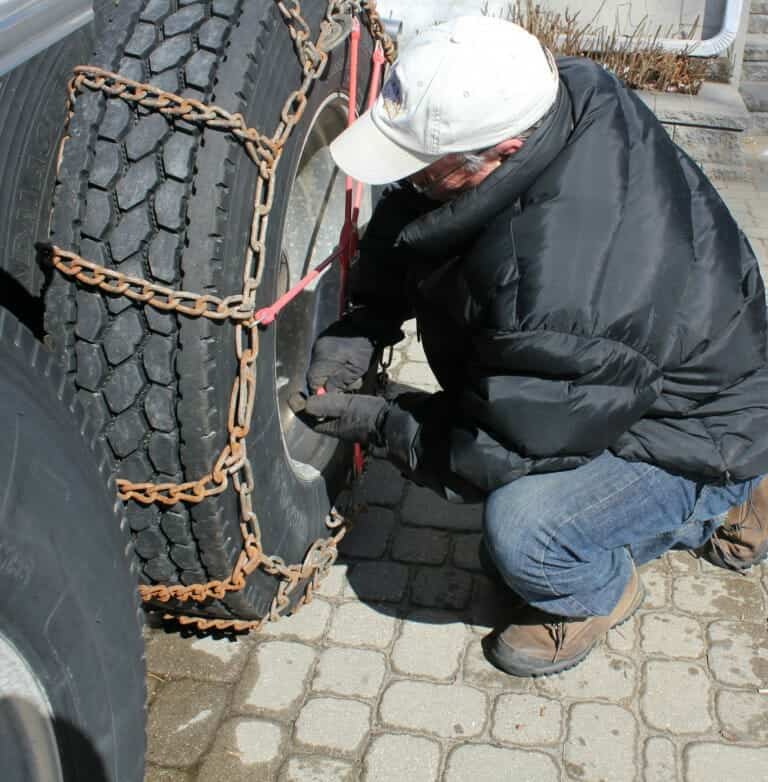
Another invaluable safety tip for truck drivers running mountain routes is to pay attention to weather reports.
This will help with trip planning. Mountain weather is unpredictable so it is good to check the weather the day of your route.
If there’s an alternate route without a steep grade, you could always reroute yourself and take the other route just to be on the safe side.
In some cases, this may even be faster depending on if you’re facing heavy snow or ice conditions.
Be prepared for the changes in weather when climbing or descending a grade.
The severe change in altitude can bring about a mixed bag of weather conditions.
Be prepared for the changes along the way.
If the chain signs are posted, respect the signs. Chain at the bottom of the hill. Do not wait until the truck spins out and the truck slides backwards down the hill.
If the hill is icy, I would recommend not attempting to climb or descend the hill.
Stay put until the sanders are out and the chain up signs are down.
Related > How to Chain Up
#5 Don’t Tailgate
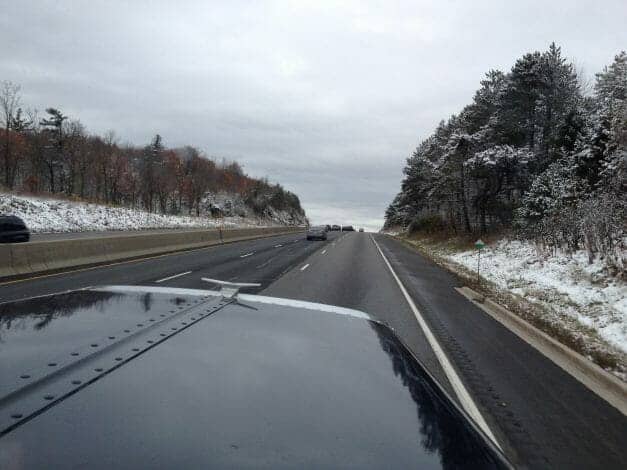
Leave as much room as possible in front of your truck.
NEVER tailgate on a grade. In case you get in trouble and need to straighten out the truck. If it gets out of shape, it’s best to have plenty of room to adjust.
If the truck in front of you hits the brakes and his trailer starts to walk sideways, you need to have the room to get your truck and trailer slowed down and stopped.
If you can’t do this in time, you stand a high chance of sliding into the truck in front of you.
Also, keep in mind, not every truck on the road is following all the safe driving tips that you are.
They are just as likely to jackknife, lose control or hit a patch of ice. Give yourself plenty of distance between you and potential dangers from other units.
Take corners on a hill extra slowly and carefully.
A truck and trailer is extra vulnerable when not straight. It is much more prone to jackknifing. The driver has the most control over the unit, when the unit is lined up and traveling in a straight line.
It’s a good idea if you bump the jake down into 2nd position rather than high, when taking a corner.
Related Article > Cornering a Big Rig Safely – Keeping the Rubber Side Down
#6 How to Regain Control of Your Truck When Driving in the Mountains
If you feel for whatever reason you are starting to lose control of the truck, try crowding the truck/trailer unit to the shoulder of the road if possible.
This will hopefully allow you to catch enough gravel to straighten the unit out.
Also give the unit a bit of trailer brake, just gently.
This MAY be enough to pull the unit straight.
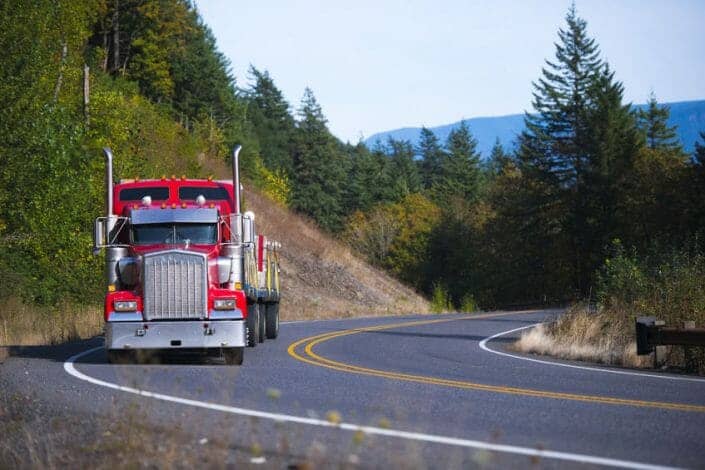
#7 Use Runaway Lanes When Necessary – Mountain Driving Safety Tip
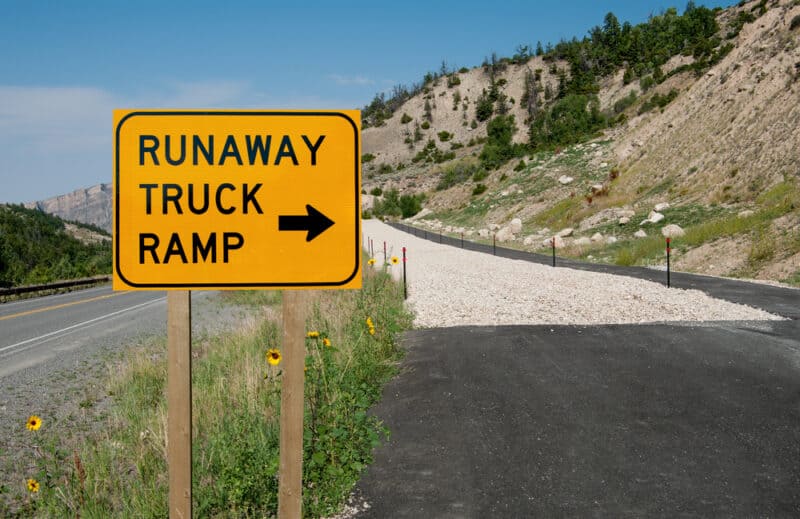
If it’s absolutely necessary, do use the runaway lanes.
They are there for a reason – as a last resort.
They are there for your safety and the safety of others on the hill.
If you look in your rearview mirrors and you can read the decals on the trailer, you may very well be in trouble at that point! Head for the runaway lane if you need to.
It’s best at that point to get the unit off the road so you aren’t hurt or you don’t harm others on the road.
If you have pulled the truck off the road and it lands in a ditch, be sure to shut off all of the power.
Then safely get far away from the truck.
Depending upon where the runaway lane is, the structure will be different.
Related > > How to Handle a Jackknife Skid
Most are structured with the goal in mind to stop the truck as it sinks into the soft sand or substance, once the unit has routed onto the runaway lane.
However, in Western Canada, not all are structured like this.
They are steep curved hills where the truck will ride to the top of the curved hill to slow the truck down, then the truck will roll backward down the hill and then roll to a stop.
It may be necessary to abandon the truck if this is the case. It may even be necessary to jump clear of the truck.
Hopefully, you will never encounter a such a situation as this in your driving career.
Regardless of whether you’re a truck driver with decades of experience under your belt or a fresh off the block driver, if you follow common sense safety tips and don’t get overconfident then you should be okay driving mountain routes.
